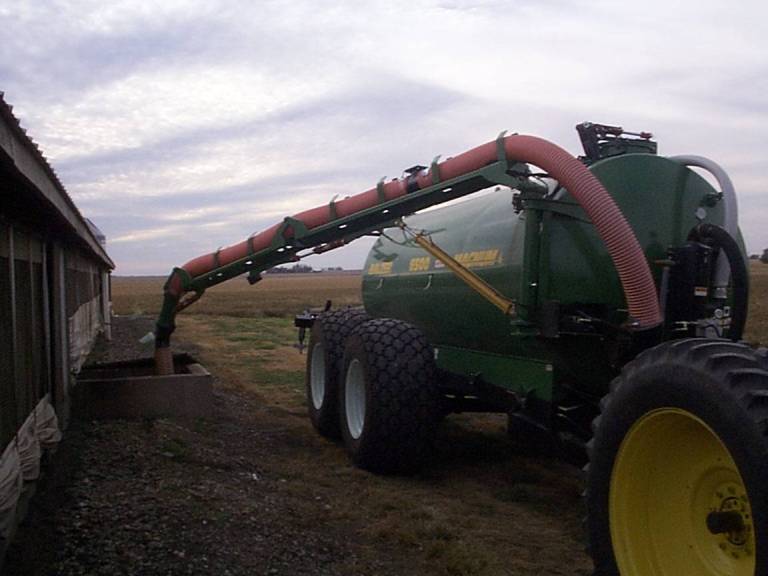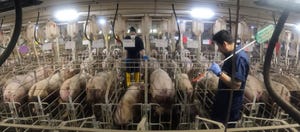Manure Haulers Take Precautions to Avoid Disease Spread
An article in the Feb. 15, 2013 issue of National Hog Farmer magazine explains how manure applicators can keep the porcine reproductive and respiratory syndrome (PRRS) virus from hitching a ride on equipment during manure pumping and hauling operations.

Dave Wright, DVM, Buffalo, MN, says the PRRS virus spreads in a variety of ways, including through urine and feces. The virus is also capable of traveling up to 6 miles through the air. These factors combined make the virus easy to spread but difficult to battle.
Wright is spearheading a regional PRRS elimination project in Minnesota. He works with pork producers on strategies for controlling the spread of PRRS in their area by coordinating a voluntary, producer-led disease control program that emphasizes communication and education. “Taking the necessary steps to minimize the risk of spreading PRRS is really critical,” he says. “PRRS costs the swine industry $640 million to $1 billion annually.”
Research has shown the PRRS virus can survive for up to six days at temperatures of 70°F. Wright says the virus has been shown to survive up to 11 days under cold and wet conditions and for years when frozen. “This is a problem because usually manure application is done in the fall when it is cold and wet, and that makes it the ‘high season’ for PRRS transmission,” he says.
Daniel Linhares, DVM, at the University of Minnesota, recently investigated how long the PRRS virus could remain viable in swine manure at different temperatures. He compared the half-life of the PRRS virus in manure to similar survivability in a cell culture medium. Half-life is the amount of time it takes for half of the virus to die off, thereby reducing its potential to be infectious.
Linhares found an exponential decrease in PRRS virus infectivity with increasing temperatures. While the half-life of PRRS virus in manure was 112 hours at a refrigerator temperature of 39.2°F., it dropped to 14.6 hours at room temperature (68°F.) and only 1.6 hours when manure was close to pig body temperature (104°F.).
Wright says Linhares’ results could be used to develop strategies to inactivate PRRS virus present in a manure-contaminated environment. In the meantime, manure haulers should take steps to minimize the risk of spreading the PRRS virus by first initiating conversations with pork producer clients about their PRRS status.
It is important to understand whether or not farms are experiencing a disease outbreak and manage the route between clients to help minimize the risk of spreading disease. Wright urges manure haulers to discuss biosecurity protocols with each farm’s staff and then make sure to follow those rules.
He also suggests strategies such as alternating between dairy and swine clients, implementing rigorous equipment washing procedures, maintaining a safe distance between equipment and swine buildings, and wearing clean clothing and boots when visiting hog operations. Additional details may be found here.
About the Author(s)
You May Also Like



